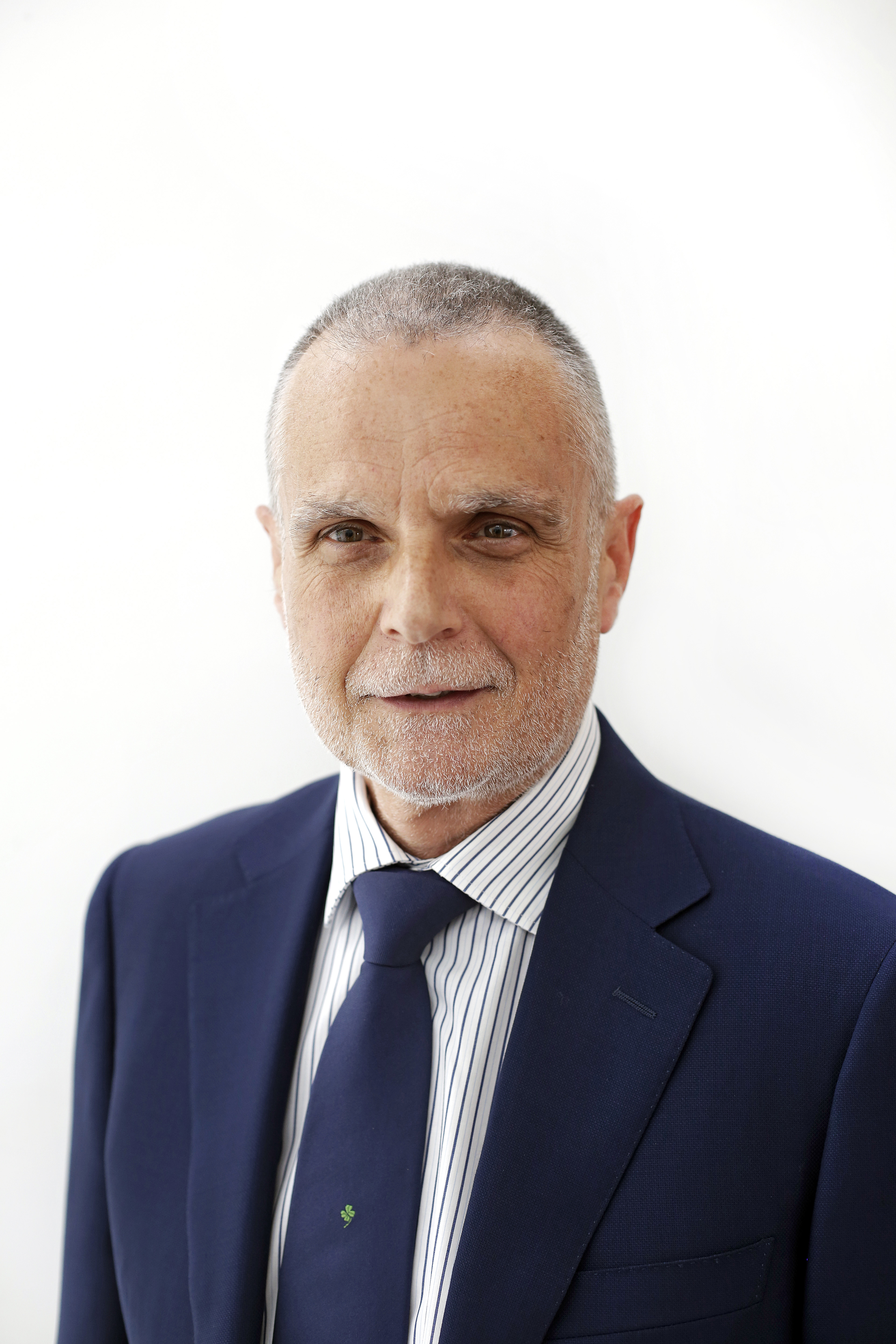
Juanjo Laraudogoitia
-
Welche sind, in Ihrer Meinung, die meisten technologischen Herausforderungen, denen sich Ihr Sektor gegenübersieht?
Hauptsächlich steht der Stahlsektor vor drei großen Herausforderungen: zwei im Bereich der Prozesse, der Kreislaufwirtschaft und der Digitalisierung; und einer im Produktbereich, die darin besteht, unter Aufrechterhaltung der gleichen Aufforderungen die spezifische Leistung der Materialien im Betrieb zu erhöhen, die Eigenschaften zu verbessern sowie das Gewicht der Komponenten zu vermindern.
Die Herausforderung der Kreislaufwirtschaft besteht darin, den im Industrieprozess entstandenen Industrieabfall in Nebenerzeugnisse umzuwandeln, die entweder intern, von uns, oder extern, von Dritten, als Rohstoffe wiederverwendbar sind. Ein Beispiel unserer Verpflichtung zur Kreislaufwirtschaft zeigt sich an unserer aktiven Beteiligung am europäischen Projekts im Rahmen des LIFE 5RefrACT-Programms, das eben darauf zielt: auf die effektive Wiederverwendung der während unserer industriellen Aktivitäten erzeugten Nebenprodukte.
Was die Herausforderung in Bezug auf Digitalisierung und Vernetzung betrifft, zeigt sich das Engagement von Sidenor an unserer Teilnahme am europäischen Projekt des RFCS-Programms (Research Fund for Coal and Steel), Quality 4.0. Im Zeitalter der Industrie 4.0, in der die Kapazitäten zur Erfassung und Speicherung von Daten erheblich gesteigert sind, verwendet dieses Projekt Algorithmen zur Erkennung der Qualität dieser umfangreichen Daten. Als Beispiel des intensiven, mit direkter industrieller Anwendung verbundenen Engagements von Sidenor in diesem Bereich nehmen wir außerdem an den Bind4.0 (mit Unterstützung der baskischen Regierung) und Bizkaia Open Future (einer Initiative von Telefónica S.A. und der Provinzregierung Vizcaya) Programmen teil.
Schließlich müssen wir der Herausforderung der Erhöhung der spezifischen Leistung des Produkts begegnen. Auch in dieser Hinsicht ist Sidenor tätig: als Beispiel davon möchte ich die Arbeit unterstreichen, die im Rahmen des europäischen Projekts des RFCS-Programms geleistet wird: Innofat zielt darauf, durch die Verbesserung des Ermüdungsverhaltens das Gewicht der Automobilkomponente zu vermindern. Zu diesem Zweck untersuchen wir Stähle mit verbesserten transversalen Eigenschaften und höherer Festigkeit.
-
Welche Aspekte sollten aus Ihrer Erfahrung und in Ihrer Meinung von den Verwaltungen verbessert werden, um in den baskischen Unternehmen F+E-Aktionen zu fördern?
In meiner Meinung ist die Bestimmung der F+E-Politiken auf lokaler Ebene durch die baskische Regierung und die Provinzregierungen gut, ich glaube, wir befinden uns auf dem richtigen Weg, obwohl die Finanzierungsfrage wie immer entscheidend ist und je mehr Mittel verfügbar sind, desto mehr Wachstumsmöglichkeiten entstehen und desto besser werden unsere Rentabilität und unsere Wettbewerbsfähigkeit.
Genauer gesagt ist der Strom ein wesentlicher Punkt in unserem Sektor; der Strompreis sollte vermindert werden, so dass unsere Unternehmen, so dass wir unter gleichen Bedingungen dem Wettbewerb auf dem globalisierten Markt, in dem wir uns bewegen, standhalten können.
Außerdem – und wie ich es vorher gesagt habe – bezieht sich eine der größten vor uns liegenden Herausforderungen auf die Kreislaufwirtschaft. Die Verwaltungen sollten mehr Initiativen unterstützen, so dass dieses Prinzip Wirklichkeit wird und die im industriellen Produktionsprozess entstandenen Abfälle in “Rohstoff”-Materialen umgewandelt werden, die effektiv verwendbar sind.
In diesem Zusammenhang glaube ich, dass die baskische Regierung dazu fähig gewesen ist, die Themen in Bezug auf Unternehmen und Technologiezentren anzugehen, indem sie Programme zur Unterstützung der F+E+I von Unternehmen sowie F+I-Unternehmenseinheiten umgesetzt hat.
-
Ein aktuelles Defizit in der Industrie ist die Schwierigkeit, Berufsprofile anzuziehen, die den Unternehmensbedürfnissen entsprechen. Ist dieses Problem Ihrer Meinung nach geringer im Bereich der F+E? In welchen Bereichen ist es in Ihrer Meinung am Schwierigsten, die Stellen zu besetzen? Sind die Technologiezentren eine gute Brutstätte für den Nachwuchs der baskischen Industrie?
Fest steht, dass es immer schwieriger wird, Profile für die Industrie zu finden. Wir stoßen auf Schwierigkeiten bei der Besetzung von Stellen und wir müssen schnell handeln, andernfalls wird sich diese Lage in den nächsten Jahren verschlechtern.
Die Industrie im Allgemeinen und, als Teil davon, die Stahlunternehmen, müssen das Interesse der jungen Leute an diesem Sektor fördern. Wir müssen sie mit der Industrie vertraut machen, damit sie diese aus erster Hand kennenlernen. Wir müssen für sie attraktiv sein, so dass sie in der riesigen Anwahl an Ausbildungsmöglichkeiten, die sie haben, technische Studiengänge wählen. All diese Personen, die jetzt im Schulalter sind, werden die Fachkräfte von morgen sein, die wir einstellen werden; aus diesem Grund nimmt Sidenor aktiv an Initiativen wie dem Tag der Industrie teil, die eben darauf zielen, den Sektor bei der Jugend bekannt zu machen. Dank dieser Initiative können Schüler aus der Sekundarstufe Sidenor kennenlernen und die Möglichkeiten entdecken, die wir ihnen anbieten können.
-
Was ist, in Ihrer Meinung, das F+E+I-Leuchtturmprojekt, woran Ihr Unternehmen teilnimmt, und welche sind seine Ziele?
Sidenor führt drei Leuchtturmprojekte durch, die uns dazu erlauben, mit großem Optimismus in die Zukunft zu blicken: 5RefrACT, Quality 4.0, und Innofat.
5RefRACT zielt darauf, den Sektor in Bezug auf die Gesamtverwertung der von uns gebrauchten Feuerfestmaterialien umzuerziehen. Dieses Projekt positioniert Sidenor als Referenzunternehmen im Sektor in Bezug auf die Förderung der Kreislaufwirtschaft, wobei die Wiederverwertung unserer Abfälle und, dadurch, eine erhebliche Verminderung unseres CO2-Fussabdrucks ermöglicht werden. Diese Verpflichtung ist Teil unserer DNA und dank solcher Projekte können wir unser Engagement weiter entwickeln.
Das Leuchtturmprojekt in Bezug auf die Digitalisierungsstrategie von Sidenor, mit F+E-Fokus, ist Quality 4.0. Wie ich gesagt habe, hat der Aufbruch der Industrie 4.0 eine erhebliche Steigerung der Kapazitäten zur Erfassung und Speicherung von Daten bedeutet. Um die Prozessvortrefflichkeit zu gewährleisten, müssen wir die Qualität dieser gesamten Daten kennen, was eben das Ziel dieses Projekts ist.
Innofat ist das dritte Schlüsselprojekt, das wir durchführen; es zielt darauf, das Gewicht von Automobilkomponenten anhand eines verbesserten Ermüdungsverhaltens zu vermindern. Es geht darum, die spezifische Leistung zu erhöhen, und zu diesem Zweck untersuchen wir Stähle mit verbesserten transversalen Eigenschaften und höher Festigkeit, was den CO2-Fussabdruck vermindert und sich auch auf den Kunden auswirkt, da die Dienstleistung verbessert wird.

